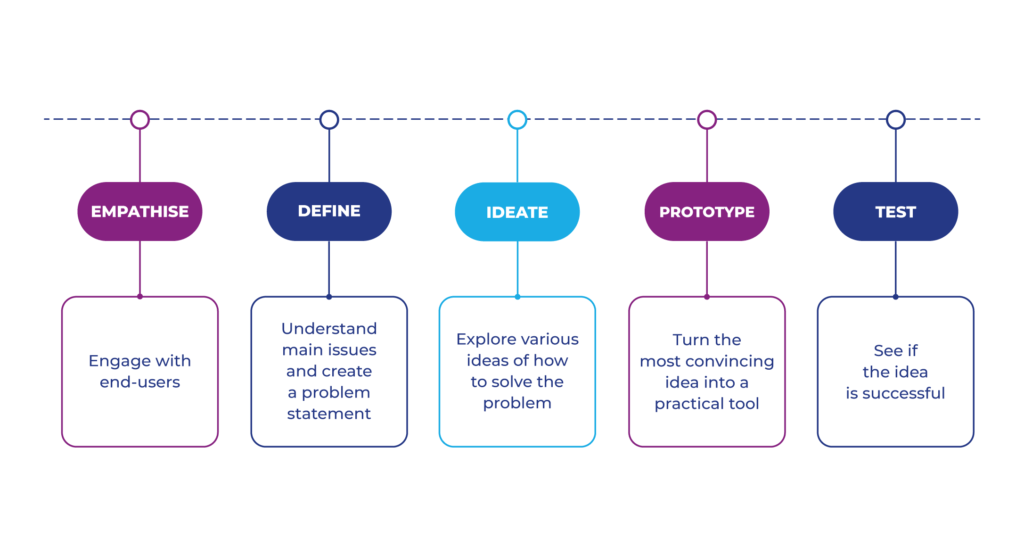Design Thinking virtual training workshops: A fun and fruitful experience
The IcARUS project organised in March its first training on the Design Thinking Methodology. Over a period of four days, 56 representatives of the project’s partners took part in the training sessions, which combined team and individual work, brainstorming and interactive games.
By the end of the training, the partners were familiarised with the novel techniques of the DT methodology, and eager to adopt them in their own organisational settings.
The IcARUS project organised in March its first training programme on the Design Thinking methodology. Combining team and individual work, brainstorming, and interactive exercises in the form of games, the four sessions were given online. The training started off with providing the attendees with the general guidelines and specific examples of the methodology at hand, so that they could understand the reason why ‘thinking outside the box’ is an efficient way to solve urban security problems. Participants then shared real-life situations they encounter in their work in relation with solving problems within the urban environment. They were then asked to discuss real-life situations related to the four IcARUS focus areas (i.e. juvenile delinquency, radicalisation, trafficking and organised crime, and the design and management of safe public spaces). As they gained a better grasp of the Design Thinking methodology, they were asked to co-create a DT process by experimenting on real examples of urban criminality.
The last two training sessions focused on the four competences needed to successfully implement the methodology, which are interconnected: empathy, experimentalism, creativity, and collaboration. Four sub-groups were formed, one per competence, where participants had ample opportunity to contribute and interact with the rest of the team.
An overarching aim of the sessions was to effectively demonstrate the five Design Thinking stages (see figure below) while co-creating an innovative ecosystem. To that effect, the trainees were given insight on when, how, and why to apply the Design Thinking approach, the pros of generating ideas through empathy, ways to determine and understand stakeholders, how to create the necessary strategies to address a problem, when to prototype and test said strategies, and how to compare the ideas produced through this process in order to decide on an optimal, functional solution.

The training was met with enthusiasm on the part of the trainees, proven by their active participation and fruitful exchanges throughout the sessions.. Many participants said afterwards that they now embraced the Design Thinking process and were provided with the necessary roadmap to facilitate their navigation throughout the rest of the IcARUS’ workshops. All sessions were interactive, dynamic, and entertaining, with the sub-group sessions being the most productive due to their small number of participants and the focus on problem-solving connected to real-life situations, which were tailor-made for each competence.
Lastly, it should be noted that the focal point of the sessions’ success was that it managed to build trust, foster connections, and create a bond among the different members of the consortium. To that effect, the participants communicated feelings of being inspired by the training sessions and satisfied with the group dynamic that had been created. Many also agreed that they had a very enjoyable experience.

subscribe to be the first to receive icarus news!
Know what we've been up to and the latest on the European urban security frame.








